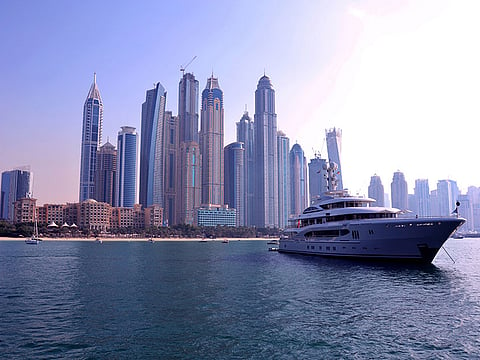S&P sees stable outlook for GCC economies and the banking sectors
Slowing loan growth, asset quality issues could hurt profitability

Dubai: The credit quality of GCC sovereigns and banks are expected to remain stable this year, despite a slower pace of economic growth driven by lower oil prices according to global rating agency Standard & Poor’s.
On an assumption of oil prices averaging at $55 (Dh202) a barrel (Brent), S&P expects GCC oil exporters to grow at 3.8 per cent this year, similar rate as in 2018. While government spending will be a key driver of economic growth, GCC governments have been funding the budget deficits through reserves and borrowings.
“Under our oil price assumptions, we expect GCC countries to maintain their overall GDP growth this year.
Most GCC countries have sufficient fiscal space in terms of government surpluses and relatively low debt to GDP ratios,” said Trevor Cullinan, analyst at S&P.
S&P projects stable outlook for banks in Kuwait, UAE, Qatar and Saudi Arabia, while fiscal pressures will weigh on banks in Oman and Bahrain.
While maintaining a stable outlook for the regional banks the rating agency said banking sectors in the GCC are likely to face issues related to asset quality, capital flows and investor perception. As the banks continue to operate in a less supportive economic environment, S&P analysts expect lending growth to remain subdued and asset quality indicators to deteriorate.
“More than 90 per cent of banks rated by us have stable outlook. The story so far has accounted most of the risks, however, risks associated with oil prices and geopolitical risks have the potential for weakening asset quality and profitability of GCC banks,” said Mohamed Damak, global head of Islamic Finance at Standard & Poor’s (S&P).
According to S&P forecasts, the loan growth across the GCC will be in the mid-single digits in 2019. While loan growth is expected to remain subdued, cost of risks and cost of funds are likely to increase during the course of the year. In addition to lower oil prices, S&P analysts said performance of some key non-oil sectors of the economy such as real estate, tourism and retail business will have implications for banks’ profitability and asset quality.
“Non-performing loan (NPL) formation and cost of risks will be on the rise. As banks continue to operate in less supportive economic environments, and as some of them adopt IFRS 9 (International Financial Reporting Standards) reporting, we believe that most of these banking systems will show at best stable indicators or a slight deterioration,” said Damak.
GCC banks well-capitalised
The average RAC [risk adjusted capital] ratio of the rated banks were more than 11 per cent at year-end 2018 and banks’ capital bases comprise mainly common equity instruments. Although GCC banks are heavily deposit funded and well capitalised by global standards, the cyclical nature of the economies they operate carry greater concentration risk on both assets and liabilities sides of the balance sheet than other global investment-grade banks.
Concentration by economic sector is also high and a source of banks’ exposure to cyclicality risks. The most prominent example is Gulf banks’ lending to the construction and real estate sectors, which accounted for about 20 per cent of total exposures on average.
Sign up for the Daily Briefing
Get the latest news and updates straight to your inbox



